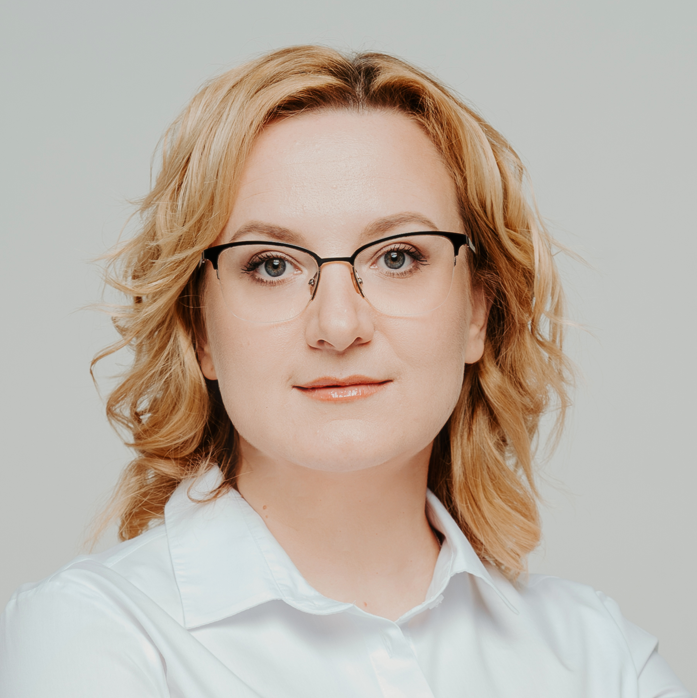No matter how hard we try to feel young, there are laws of nature. And no matter what cosmetology and medicine offer now, which work to prolong life and youth, old age comes anyway.
At first, we all don't think about the fact that we grow older over the years. And then we begin to fear aging and avoid thinking about it. But is it worth being afraid of growing old? The human psyche is designed in such a way that it is not afraid only of the well-known. You can reassure yourself that cosmetology will correct external signs. Medicine will add a few more years. And what about energy, well-being and quality of life? I decided to investigate whether it is possible to somehow measure the quality of life of elderly people. And I am happy to share what I found.

Active ageing is a beautiful and optimistic term first introduced in research by the World Health Organization (WHO) in the early 2000s. According to the WHO definition: "Active ageing is the process of optimizing opportunities for health, daily activities and safety, with the aim of improving the quality of life of people as they age. Active ageing concerns both individuals and entire populations. It enables people to realize their physical, social and mental potential throughout their lives, to participate in society according to their needs, desires and abilities, and to provide them with appropriate protection, safety and care when they need help."
Scientists measure the active aging index, which takes into account the potential and degree of participation of people aged 55–74 in society and the economy, using many indicators. A high active aging index is characteristic of countries with a strong system of involving older people in social processes.
For example, in Japan, elderly people do not just try to work until old age. Specialized employment services for pensioners are developed there. In Eastern cultures, there is a cult of longevity and respect for the elderly, who are considered carriers of life wisdom. Using a mobile application, you can hire an elderly companion to get valuable advice or just spend time together. This market is in great demand.
The active aging index in Japan is about 45 points. Among European countries, Sweden and Denmark, for example, have similar indicators.
The second indicator of the quality of life of the elderly is healthcare costs and the level of development of the healthcare system, etc. For example, in Sweden 15 years ago, insurance companies and pension funds had the opportunity to invest in the latest technologies, which gave a leap in the development of telemedicine, etc. While in Ukraine, such investments for pension funds and accumulative insurance were strictly limited by law in favor of government securities, bank accounts and real estate. Interestingly, today Sweden has one of the highest levels of the active aging index.

The table below shows the active aging index, with health care costs, average pensions, and average consumer basket. Of course, it should be noted that price levels also vary greatly across countries.
Active aging index by country
-
Switzerland
~$10,897
-
Japan
~$4,347
-
Sweden
~$5,980
-
Denmark
~$6,332
-
Germany
~$6,191
-
Italy
~$3,066
-
Spain
~$3,500
-
Poland
~$1,225
-
Ukraine
~$368
-
USA(CA)
~$12,474
-
Israel
~$4,339
-
Switzerland
~$33,432
-
Japan
~$18,000
-
Sweden
~$20,000
-
Denmark
~$22,000
-
Germany
~$18,000
-
Italy
~$15,000
-
Spain
~$14,000
-
Poland
~$7,200
-
Ukraine
~$2,400
-
USA(CA)
~$21,000
-
Israel
~$18,000
-
Switzerland
~$50,000
-
Japan
~$30,000
-
Sweden
~$30,000
-
Denmark
~$35,000
-
Germany
~$25,000
-
Italy
~$20,000
-
Spain
~$20,000
-
Poland
~$14,400
-
Ukraine
~$6,000
-
USA(CA)
~$47,000
-
Israel
~$22,140
-
Switzerland
~41–43
-
Japan
~42–45
-
Sweden
~44–45
-
Denmark
~43–44
-
Germany
~40–41
-
Italy
~37–39
-
Spain
~38–40
-
Poland
~30–32
-
Ukraine
~28–30
-
USA(CA)
~35–37
-
Israel
~39–41
Country / Region | Healthcare spending | Average pension (per year, $) | Consumer basket | Active Aging Index (AAI) |
Switzerland | ~$10,897 | ~$33,432 | ~$50,000 | ~41–43 |
Japan | ~$4,347 | ~$18,000 | ~$30,000 | ~42–45 |
Sweden | ~$5,980 | ~$20,000 | ~$30,000 | ~44–45 |
Denmark | ~$6,332 | ~$22,000 | ~$35,000 | ~43–44 |
Germany | ~$6,191 | ~$18,000 | ~$25,000 | ~40–41 |
Italy | ~$3,066 | ~$15,000 | ~$20,000 | ~37–39 |
Spain | ~$3,500 | ~$14,000 | ~$20,000 | ~38–40 |
Poland | ~$1,225 | ~$7,200 | ~$14,400 | ~30–32 |
Ukraine | ~$368 | ~$2,400 | ~$6,000 | ~28–30 |
USA(CA) | ~$12,474 | ~$21,000 | ~$47,000 | ~35–37 |
Israel | ~$4,339 | ~$18,000 | ~$22,140 | ~39–41 |
According to data from Worldometer, DataReportal – Global Digital Insights, etc.
Typically, the average pension is lower than the average consumer basket: due to inflationary increases, the deficit of the retirement age, etc. However, this is where the third factor of a happy old age comes into play, namely pension savings, which allow people from developed countries to lead an active life, including traveling the world. In countries with developed pension systems and a high standard of living, people have the resources to travel after retirement.
The table below shows the percentage of retirees who have private pension savings and use digital banking in different countries. It is clear that access to bank accounts and digital banking among retirees is high in countries with high life expectancy and high living standards.
Access to digital banking and retirement savings among retirees
-
Switzerland
85 / 81
-
Japan
88 / 82
-
Sweden
85 / 81
-
Denmark
84 / 81
-
Germany
83 / 79
-
Italy
85 / 82
-
Spain
86 / 82
-
Poland
79 / 75
-
Ukraine
75 / 71
-
USA (California)
82 / 79
-
Israel
84 / 82
-
Switzerland
64 / 65
-
Japan
62 / 65
-
Sweden
65 / 65
-
Denmark
66 / 66
-
Germany
65 / 65
-
Italy
67 / 67
-
Spain
66 / 65
-
Poland
60 / 65
-
Ukraine
60-65 / 60-65
-
USA (California)
66 / 66
-
Israel
67 / 67
-
Switzerland
~85%
-
Japan
~90%
-
Sweden
~75%
-
Denmark
~80%
-
Germany
~70%
-
Italy
~60%
-
Spain
~55%
-
Poland
~40%
-
Ukraine
~20%
-
USA (California)
~88%
-
Israel
~78%
-
Switzerland
~90%
-
Japan
~80%
-
Sweden
~92%
-
Denmark
~94%
-
Germany
~85%
-
Italy
~80%
-
Spain
~78%
-
Poland
~68%
-
Ukraine
~40%
-
USA (California)
~96%
-
Israel
~88%
Country | Life expectancy | Retirement age (women/men) | Pension savings among pensioners (%) | Digital banking among retirees (%) |
Switzerland | 85 / 81 | 64 / 65 | ~85% | ~90% |
Japan | 88 / 82 | 62 / 65 | ~90% | ~80% |
Sweden | 85 / 81 | 65 / 65 | ~75% | ~92% |
Denmark | 84 / 81 | 66 / 66 | ~80% | ~94% |
Germany | 83 / 79 | 65 / 65 | ~70% | ~85% |
Italy | 85 / 82 | 67 / 67 | ~60% | ~80% |
Spain | 86 / 82 | 66 / 65 | ~55% | ~78% |
Poland | 79 / 75 | 60 / 65 | ~40% | ~68% |
Ukraine | 75 / 71 | 60-65 / 60-65 | ~20% | ~40% |
USA (California) | 82 / 79 | 66 / 66 | ~88% | ~96% |
Israel | 84 / 82 | 67 / 67 | ~78% | ~88% |
Data for 2024 (estimates based on sources from WHO, Eurostat, IMF, national statistical authorities, etc.).
Ukraine's figures differ significantly from the same indicators in Europe. The lowest percentage of savings (only 20% of our compatriots have private pension savings) can be explained by the fact that the majority of our pensioners relied on the state and the pension it assigned. People, in their majority, did not make additional savings also because we, as a nation, still overwhelmingly do not trust private pension insurance programs. But it is time for the generation of thirty-year-old, and especially forty-year-old Ukrainians to draw conclusions and start saving for their retirement, investing in their active aging, without relying on the state. And if there is no trust in private pension funds, then long-term bank deposits can be considered as a tool for saving and increasing funds.
Regarding the use of digital banking, the good news is that we also have room to grow. While approximately 84% of Ukrainian pensioners have bank accounts, only 40% use digital banking. And this could be a “blue ocean” for banks - for those banks that find the password to the hearts and minds of Ukrainian pensioners, both current and future.













